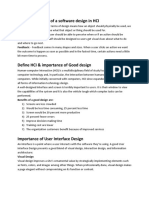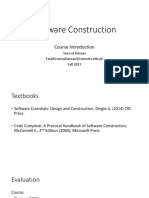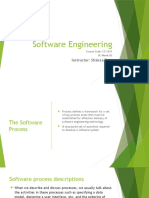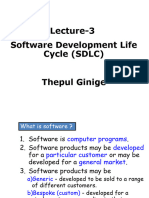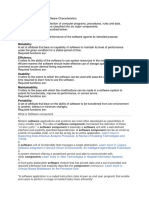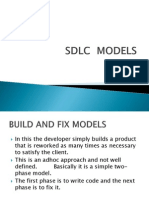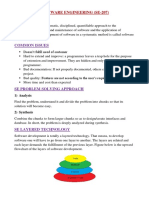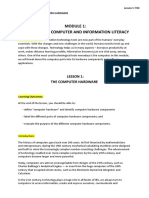0% found this document useful (0 votes)
27 views17 pagesCOSC 409 Summary
Human-Computer Interaction (HCI) is a multidisciplinary field focused on designing user-friendly computing systems, evolving from its origins in the 1980s with personal computing. The goals of HCI include safety, utility, effectiveness, efficiency, and usability, while poor user interfaces often stem from inadequate training and rapid technological changes. The document also covers software engineering principles, software development life cycle models, the importance of personas in design, accessibility considerations, and guidelines for effective user interface design.
Uploaded by
hamzahaladu002Copyright
© © All Rights Reserved
We take content rights seriously. If you suspect this is your content, claim it here.
Available Formats
Download as PDF, TXT or read online on Scribd
0% found this document useful (0 votes)
27 views17 pagesCOSC 409 Summary
Human-Computer Interaction (HCI) is a multidisciplinary field focused on designing user-friendly computing systems, evolving from its origins in the 1980s with personal computing. The goals of HCI include safety, utility, effectiveness, efficiency, and usability, while poor user interfaces often stem from inadequate training and rapid technological changes. The document also covers software engineering principles, software development life cycle models, the importance of personas in design, accessibility considerations, and guidelines for effective user interface design.
Uploaded by
hamzahaladu002Copyright
© © All Rights Reserved
We take content rights seriously. If you suspect this is your content, claim it here.
Available Formats
Download as PDF, TXT or read online on Scribd
/ 17







